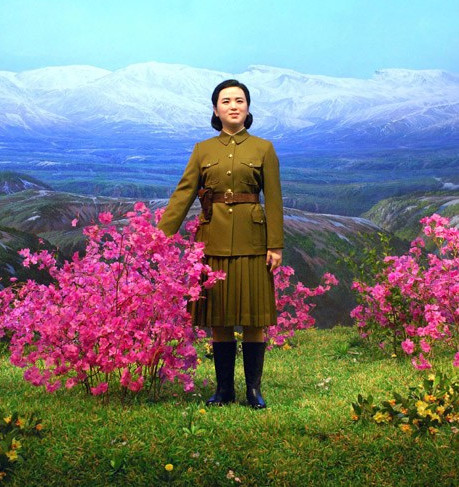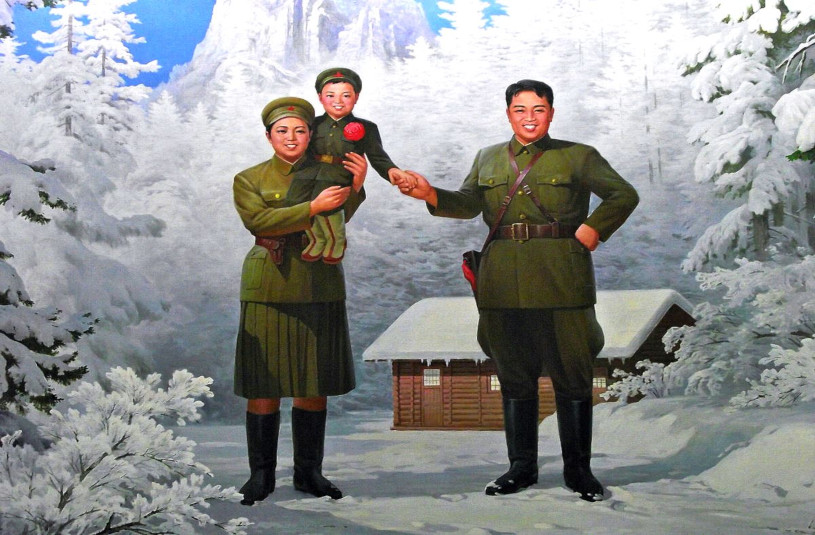Introduction
You have likely heard of Kim Il Sung, Kim Jong Il, and Kim Jong Un. But have you heard Kim Jong-Suk?
Who was Kim Jong-Suk?
Mother Kim Jong Suk was the first wife of President Kim Il Sung and the mother of his son Kim Jong Il. In a society dominated by leading male figures, Mother Kim largely stays in the background. But that does not, however, mean her national role is insignificant. Jong Suk’s depicted legacy in the country provides key insights into the role of women in DPRK politics. As the titular “heroine of the revolution”, she grants a motherly character to the regime and its politics, lending credence to the notion that the state is not unlike a family.

Confucian principles in North Korea
To understand Jong Suk’s role, we first turn to accomplished North Korean historian Bruce Cummings. In stark counterpoint to popular American media portrayals of North Korea, which tend to vilify the country in simplified Cold War frameworks, Cumming’s work strives to understand North Korea in its own cultural, historical and social context. It is, to say the least, objective.
A key principle of Cummings’ work has been how the North Korean state models itself after the traditional Confucian ideal of the family – albeit, of course, with socialist characteristics. The Kims are not just leaders, but they are understood to be — and depicted as – fathers. The state is an all-encompassing extended family. Although we hear many negative stories, their rule is ostensibly legitimized by being presented as benevolent and wise, in line with Confucian patriarchal philosophy. The frequently-cited “on the spot guidance” is the best example of such, firmly illustrating how leadership in the country is understood.
The Mother of Korea
As a result, whilst the male Kims have been portrayed as benevolent father figures – most predominantly Kim Il Sung – on the flip side Kim Jong Suk has been depicted in motherly terms by the state media. As Paul French notes, Jong Suk has been termed the “Mother of Korea”. Whilst like her counterparts, her brilliant example, and innovation have been constantly mentioned in reports, in addition, Jong Suk’s care and support to both her husband and son have also been highlighted, including her tendency to look after and care for others around her, reflective of the role of the woman under patriarchal Confucian norms.

Nevertheless, the example she sets to the women of the country can also be characterized as militarist and revolutionary. Her personality traits have been consistently tied to deeds accomplished during the resistance against Japan. Whilst typical thinking has assumed women took a background role in the conflict, not so here; she is symbolic of how the DPRK actively sought to mobilize the whole country in the Songun (military-first) policy, with state media praising her as a fearless revolutionary resistance fighter. Given the large numbers of female soldiers in the country, this stands to reason. Cummings notes that this militarist image was consolidated over time. As the ultimate testimony to that, Jong Suk’s grave is in the Revolutionary Martyrs Cemetery outside of Pyongyang, a graveyard which honors the heroes of the resistance to Japan.
Liberté, Egalité, Sororité
As a result, this imagery of Kim Jong Suk makes the celebration of International Women’s Day in the country a curious phenomenon. By default, the DPRK states that it supports the equality and liberation of women, as does the concept of socialism as a whole. In practice, it very much remains a society constrained by traditional gender roles, and the state’s delicate portrayal of masculinity and femininity in the depiction of Kim Il Sung and his wife is very notable.
On the flip side of this, books like North Korea Confidential by Daniel Tudor and James Pearson suggest that women are at the forefront of the marketization of DPRK life, due to their being unrestrained by state jobs and with the time on their hands to do business.
Gender has thus not got in the way of the state’s requirement to advance all resources and people towards the politics of military struggle, but it is also potentially providing a challenge to the government; indeed, it might even be integral to the evolution of a new North Korea.
Click to check out our North Korea tours.





